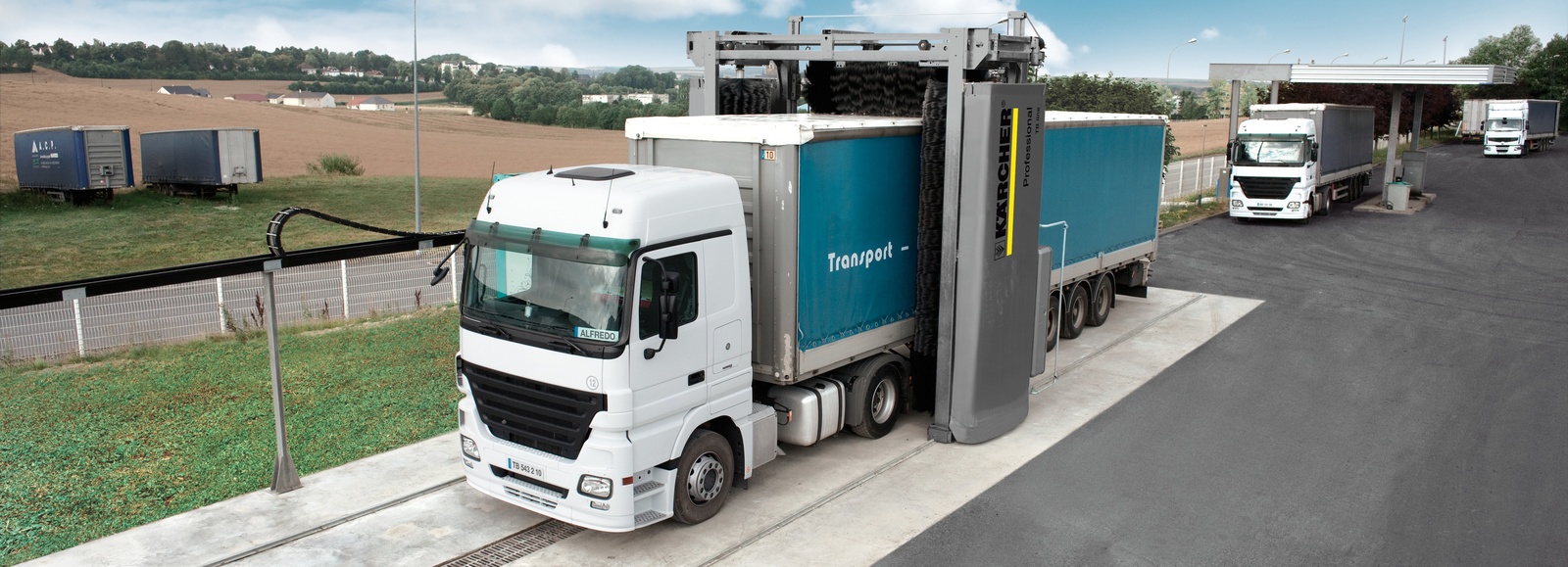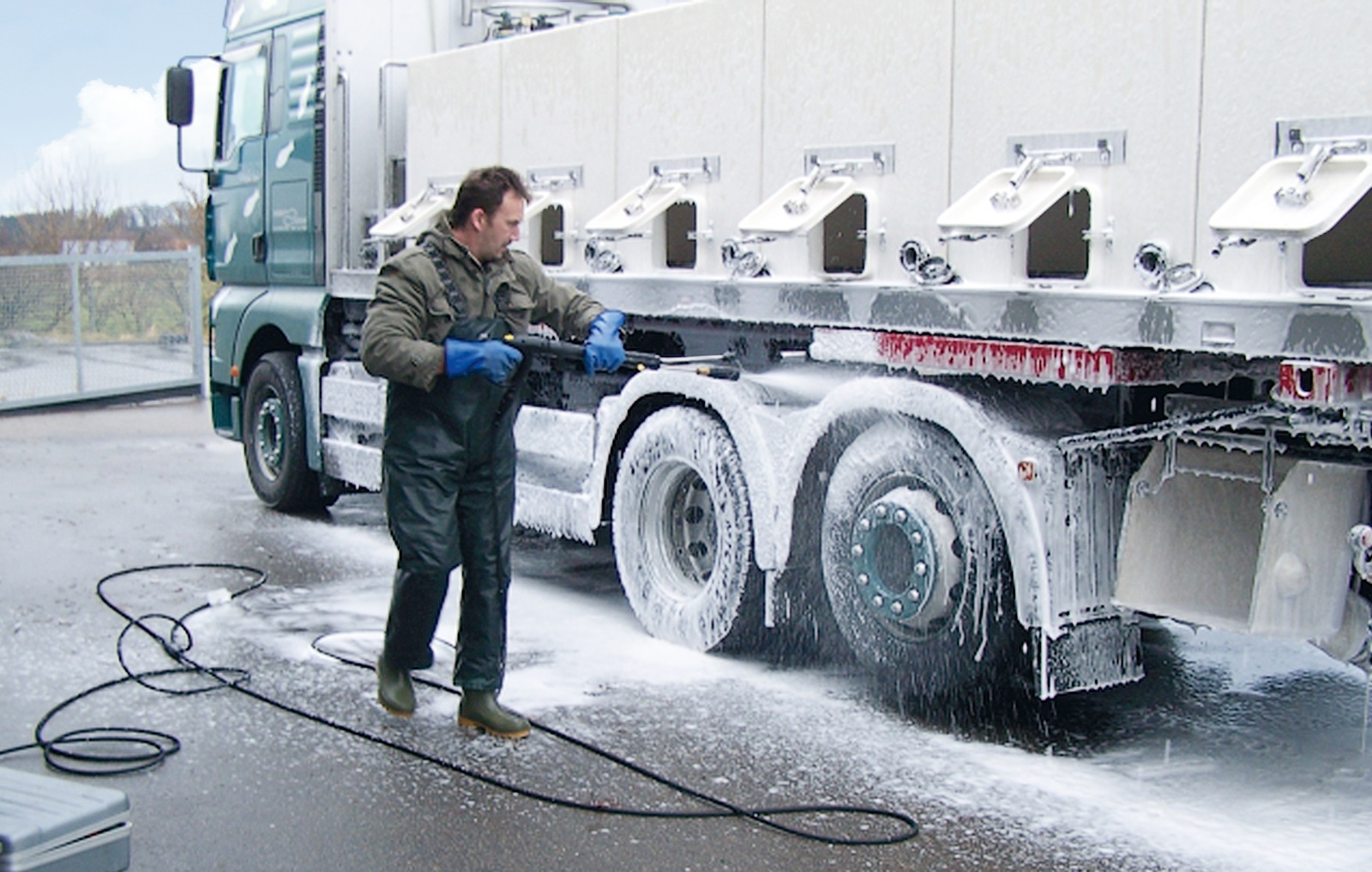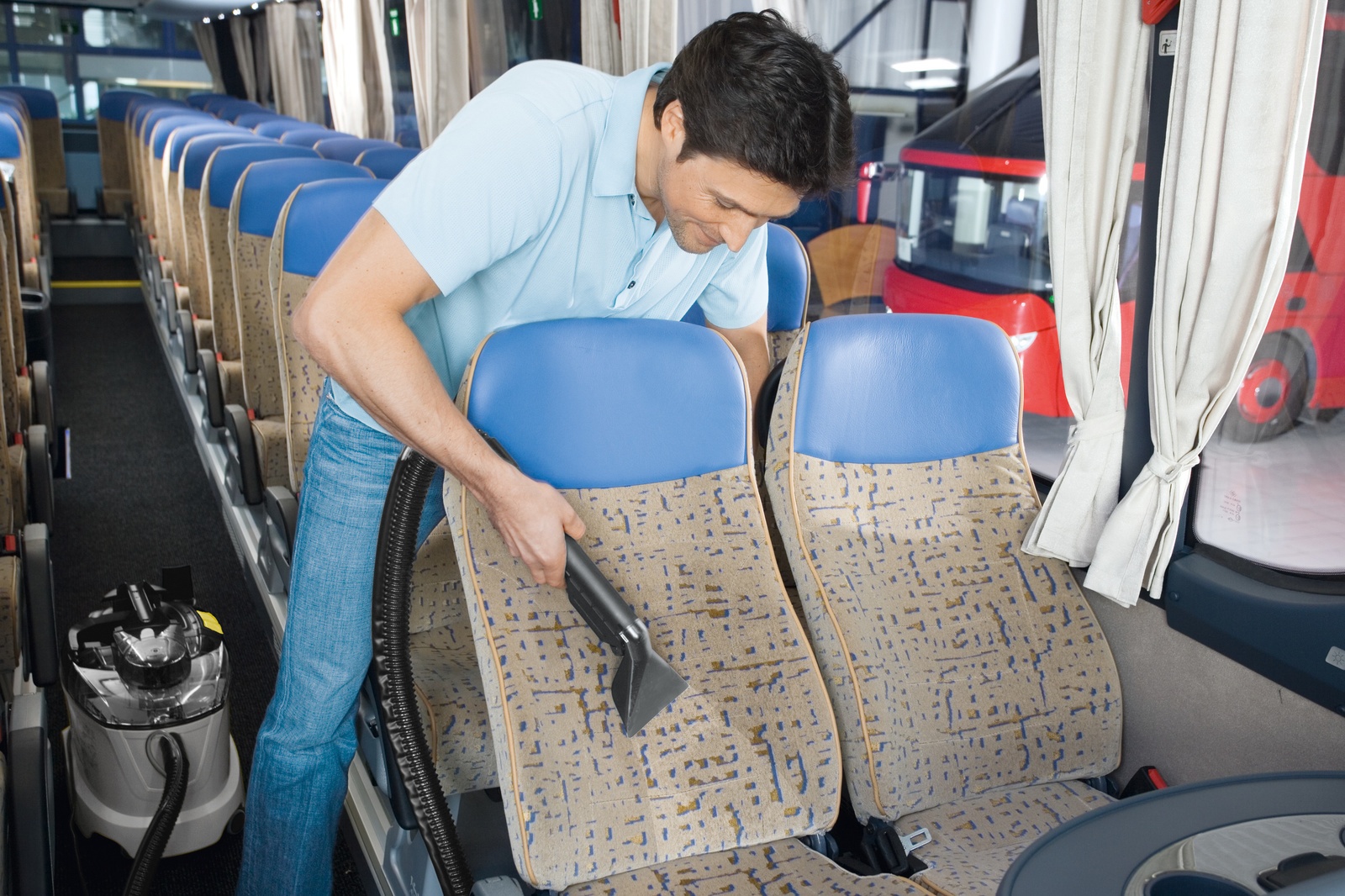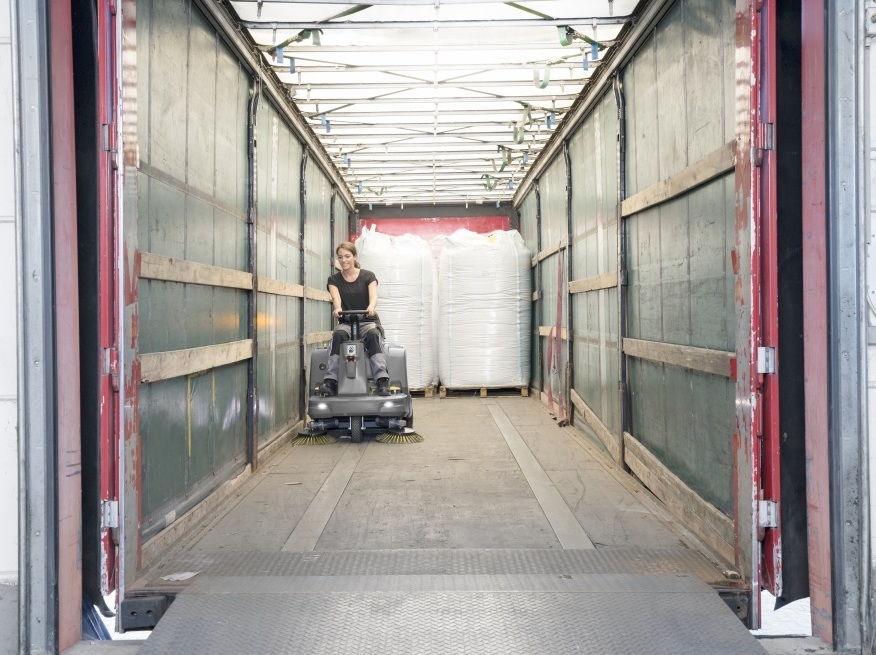Cleaning in logistics
This report takes you through the ins and outs of both exerior and interior vehicle fleet cleaning in logistics.

Clean commercial vehicles make a considerable contribution to the positive appearance of a fleet. Automatic cleaning using a gantry wash helps to reduce labour costs and save time since the demands on washing quality and speed are high. The size and design of the vehicles not only requires a special technology, but the washing chemicals must be right in order to clean commercial vehicles cost-effectively.
The dirt on commercial vehicles varies greatly depending on the purpose of use and vehicle type. The washing technology must therefore be able to reliably and quickly remove dirt such as tar spots, oils and mud stains along with seasonal deposits (e.g. road salt, flower pollen, insect and leaf residues).
This is not an easy task as modern trucks are now covered by water-based coatings, which are applied very thinly, for cost, weight and environmental reasons. The vehicle surface must therefore be handled with great care, which makes high demands of mechanics along with cleaning and care products. Another challenge is the various materials from which the trucks are manufactured, ranging from aluminium, carbon fibre and steel through to rubber and various plastics. They must all be cleaned reliably and gently in a washing process. Without chemical cleaners which have been specially formulated, this task would not be possible, or at least only as part of a very time-consuming process. A large number of products are therefore available for modern gantry truck washes and high-pressure cleaner wash bays so that the vehicle wash can be adapted to the changing challenges. Their spectrum of use ranges from the manual or automatic prewash, to rim cleaning and the main wash, through to drying and preservation.
A high-pressure cleaner is essential when prewashing commercial vehicles. Before purchasing, it must be clarified whether a mobile or stationary cold or hot water machine is needed. Mobile machines are more cost-effective and the fact that they can be moved around means that they can be used for other cleaning tasks such as workshop cleaning. However, note that these require longer set-up times. The capacity for consumables such as fuel and cleaning agent is also restricted depending on the system.
One of the advantages offered by stationary high-pressure cleaners is that the water can be heated by the power supply (electricity/gas/heating oil) without any limitation, while cords and supply lines are kept tidy and the tanks for the washing chemicals are also larger. It is therefore not necessary to refill them on a regular basis. Furthermore, the manufacturers offer numerous accessories such as wash brushes and long high-pressure lances.
An alkali truck and tarpaulin cleaner is used in the prewash. The pre-spraying agent for brush and high-pressure vehicle wash systems helps to soften and remove stubborn dirt such as grease, rust, oil, tar, insect residues and grey film. The dirt remover is either dispensed in the appropriate quantity using high-pressure cleaning machines or sprayed on thinly via the dosing system for the gantry wash. Thanks to the formulation developed for trucks and buses, despite its mild detergent content, this cleaner is both highly effective and gentle on the environment. If required, an alkali rim cleaner concentrate can be applied manually to the wheels. It is suitable for all coated alloy and steel rims (except for unpainted, special rims polished to a high gloss) and intensively yet carefully removes road dust, tyre wear, burnt-on brake dust, grit salt deposits and other dirt. Concrete floors and wheel arches are not damaged by the corrosion protection formula.
During the subsequent main wash, the softened dirt is removed by three rotating brushes with the addition of water and a powerful shampoo or foam. Their active ingredient combinations help the brushes to glide and thus protect the vehicle surface. This is followed by rinsing, whereby any remaining dirt and detergent residues are removed.
Vehicle Care
An additional programme, such as waxing, can then be selected to help maintain the vehicle. This protects the paint from any harmful environmental influences such as dust, acid rain or aggressive bird droppings. Wax also prevents corrosion since it flows into crevices and cavities penetrated by water and forms a protective film when it dries. Additional benefits are that dirt is less likely to stick to the paint, the vehicle looks its best for longer and is easier to clean. Furthermore, liquid spray wax gives vehicles a brilliant shine and long-term protection. Since it is unaffected by water quality, it also provides a spotless finish after washing without blow drying. Liquid leather has been developed for vehicle wash systems without blow drying. The product allows the wash water to flow away from the vehicle surface as a thin film without leaving any marks.

Highly environmentally friendly
To reduce the fresh water consumption, a large majority of truck wash systems now feature a water reclamation system. This enables the dirt particles to be filtered out of the reclaim water, diverted and the cleaned water to be fed back into the system. For efficient treatment of the reclaim water and safe operation of the wash system, the perfect match of washing chemicals is needed. Components such as the tank system with sludge trap, fine filtration system and reclaim water storage tank only work perfectly if they are not influenced by the cleaning chemicals. To ensure a high level of safety, it is recommended that the manufacturer's specifications are followed. A wash system with programmes and cleaning agents designed to work in unison produces the highest possible quality with little impact on the environment – and therefore helps the vehicle to retain its value.

Interior cleaning of vehicles
It is important not to neglect the interior of vehicles. A clean cab is important for the driver who has to spend his working hours inside it. The seats can be professionally cleaned using spray extraction machines, also known as spray extraction cleaners. These machines can also target the removal of stains.
Before using the spray extraction cleaner, the upholstery must first be thoroughly vacuumed. Using the spray extraction machine, a spray nozzle sprays cleaning fluid (water and cleaning agent) under pressure onto the upholstery and removes it again in the same movement using the suction nozzle.
This treatment loosens the dirt and the suction removes the dirt particles and the moisture from the upholstery. Cleaning should ideally be carried out in even, slightly overlapping strips. This process is then repeated with clean water to remove any cleaning agent residues and to reduce re-soiling. The hand nozzle must always be pushed fully onto the surface to maintain the vacuum and ensure proper cleaning.
Sweeping out the storage room
If a sweeper or vacuum sweeper is used for cleaning floors at forwarding agencies, the machine can also occasionally be used to sweep out storage rooms.
Compact, battery-powered sit-on machines which are extremely versatile are ideal. Thanks to their streamlined design and turning circles of under two metres, they can also work comfortably in a storage room.


